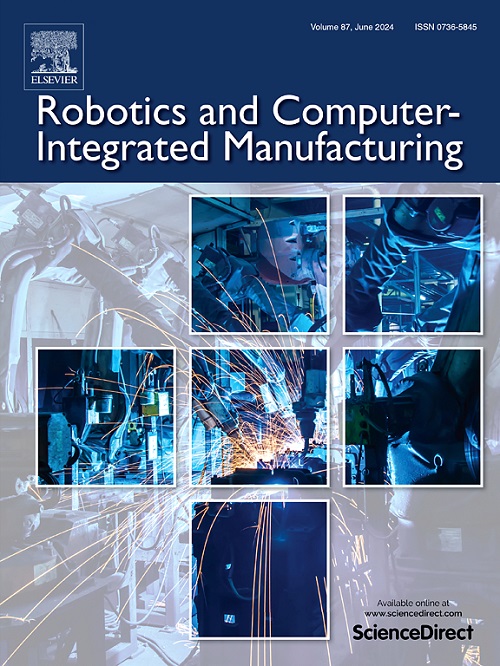Integrating large language model and digital twins in the context of industry 5.0: Framework, challenges and opportunities
IF 11.4
1区 计算机科学
Q1 COMPUTER SCIENCE, INTERDISCIPLINARY APPLICATIONS
引用次数: 0
Abstract
In Industry 5.0, where human ingenuity is combined with cutting-edge technologies such as artificial intelligence (AI) and robotics to revolutionize manufacturing with a focus on sustainability and human well-being, Digital Twins (DT) have become essential to real-time optimization. However, the complexity of managing DT for large-scale systems poses challenges in terms of data transmission, analytics, and advanced applications, which can be potentially addressed by Large Language Model (LLM). This research firstly performs a literature review to study the roles and functions of LLM in DT in the context of Industry 5.0. Subsequently, we propose a framework named Interactive-DT for LLM-DT integration that reveals the technical pathway for how LLM can be effectively integrated and function within DT environments. Within this framework, the roles and functionalities of LLM at the edge layer, DT layer, and service layer are elaborated upon. Finally, the identified research gaps and prospects for the integration of LLM and DT are outlined and discussed. The research outcomes of this paper highlight the potential of LLM to augment DT capabilities through improved construction and operation, enhanced cloud-edge collaboration, and sophisticated data analytics, ultimately promoting industrial practices that are both efficient and aligned with human-centric and sustainability principles in Industry 5.0.
工业5.0背景下大型语言模型与数字孪生的集成:框架、挑战与机遇
在工业5.0中,人类的聪明才智与人工智能(AI)和机器人等尖端技术相结合,以可持续发展和人类福祉为重点,彻底改变制造业,数字孪生(DT)已成为实时优化的关键。然而,管理大型系统的DT的复杂性在数据传输、分析和高级应用程序方面提出了挑战,这些可以通过大型语言模型(LLM)潜在地解决。本研究首先进行文献综述,研究工业5.0背景下LLM在DT中的角色和功能。随后,我们提出了一个名为Interactive-DT的LLM-DT集成框架,该框架揭示了LLM如何在DT环境中有效集成和运行的技术途径。在此框架内,详细阐述了LLM在边缘层、DT层和服务层的作用和功能。最后,概述和讨论了已确定的研究差距和法学硕士与DT整合的前景。本文的研究成果强调了LLM通过改进构建和运营、增强云边缘协作和复杂的数据分析来增强DT能力的潜力,最终促进既高效又符合工业5.0中以人为本和可持续性原则的工业实践。
本文章由计算机程序翻译,如有差异,请以英文原文为准。
求助全文
约1分钟内获得全文
求助全文
来源期刊
CiteScore
24.10
自引率
13.50%
发文量
160
审稿时长
50 days
期刊介绍:
The journal, Robotics and Computer-Integrated Manufacturing, focuses on sharing research applications that contribute to the development of new or enhanced robotics, manufacturing technologies, and innovative manufacturing strategies that are relevant to industry. Papers that combine theory and experimental validation are preferred, while review papers on current robotics and manufacturing issues are also considered. However, papers on traditional machining processes, modeling and simulation, supply chain management, and resource optimization are generally not within the scope of the journal, as there are more appropriate journals for these topics. Similarly, papers that are overly theoretical or mathematical will be directed to other suitable journals. The journal welcomes original papers in areas such as industrial robotics, human-robot collaboration in manufacturing, cloud-based manufacturing, cyber-physical production systems, big data analytics in manufacturing, smart mechatronics, machine learning, adaptive and sustainable manufacturing, and other fields involving unique manufacturing technologies.

 求助内容:
求助内容: 应助结果提醒方式:
应助结果提醒方式:


